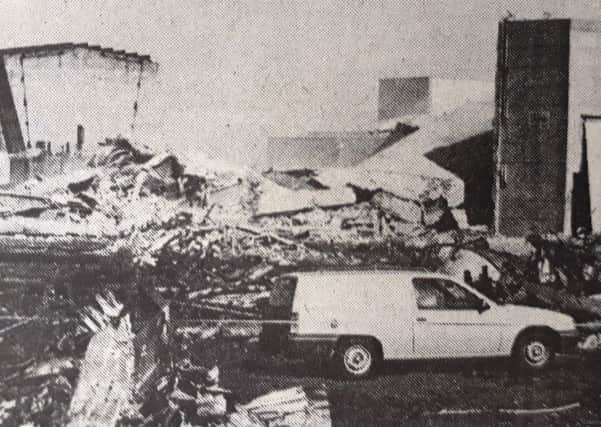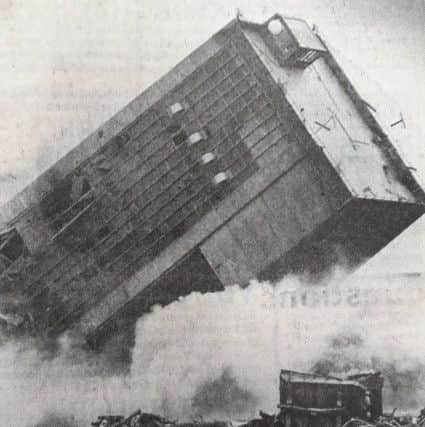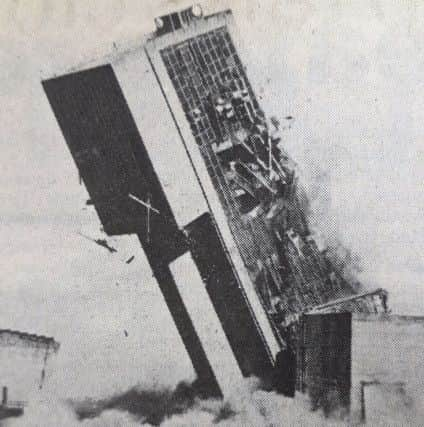Fife Nostalgia: The 'burial' of Seafield


The first of the giant winding towers at Kirkcaldy’s Seafield Colliery lay in a pile of smoking rubble and it marked the end of an era in Fife in September 1989.
The second and larger of the towers came down just a few days later, levelling one of Kirkcaldy’s most famous landmarks which had stood for 35 years on the site of the former pit.
Advertisement
Hide AdAdvertisement
Hide AdUnderstandably, emotions ran high on as crowds gathered to watch the 144 foot, 2700 tonne tower topple to the ground.


It was little wonder that hearts were heavy as many of the ex-miners watched what had been their second home and the industry they had given the best years of their lives to, reduced to a pile of bricks and mortar.
They described it as the ’burial’ of Seafield and that was exactly how it felt – with hundreds of mourners gathered to pay their last respects.
Among them was former miner Tom Brown of the Lang Toun’s Dunearn Drive, who had worked down the pit for 20 years.
Advertisement
Hide AdAdvertisement
Hide Ad“Nobody wants workers like us any more,” he said, “our day is past.


Tom and some of his former workmates had turned up to say goodbye to the place where they spent the best years of their working lives at a time when coal mining was thriving in Fife.
“I remember the times men hundreds upon hundreds of men worked in there in the days before Margaret Thatcher came to power,” he said.
“Now look at it – a pile of rubble.”
Demolition experts used almost 60 pounds of carefully placed explosives to bring down the huge tower which fell first vertically as the four legs crumbled, then horizontally as the rest of the massive structure tumbled to the ground.
Advertisement
Hide AdAdvertisement
Hide AdSpectators were kept well back, with a 200 metre exclusion zone around the tower,taking in a stretch of the Kirkcaldy-Burntisland coast road which was closed to traffic for 10 minutes.
People flocked round the perimeter fences with cameras to catch the spectacle, although many missed the actual moment as it was over in just a few seconds.
The first notice anyone had that it was about to go was a loud bang like a gunshot. Then the legs crumpled beneath the tower as it jumped back and fell towards the road in a huge cloud of dust which moved across the road and into the fields behind.
The button was pressed by 17-year-old Karen Kerr, daughter of colliery manager William Kerr.
Advertisement
Hide AdAdvertisement
Hide AdAfter the demolition the crowds dispersed quickly, reflecting on the end of the Fife coal mining industry as they knew it.
Joel Sinclair of Taylor Avenue, Cowdenbeath, began working at Seafield soon after it opened in 1958. At that time he was a shot firer, working his way up to become colliery oversman before he retired in 1983.
“I saw the decline of the industry right the way through, but today really brings it home,” he said.
That pit was our second home and we spent most of our lives down there so it is a bit emotional to see it brought down like that.”
Advertisement
Hide AdAdvertisement
Hide Ad“It is even worse because there are still millions of tonnes of quality coal down there and the men expected Seafield to be there for decades to come.”
Kirkcaldy man Alex Cameron was at Seafield from the beginning of the construction right through to completion.
”I felt a real sense of achievement seeing those towers going up and it was very sad to watch than coming down after all that time,” he said.